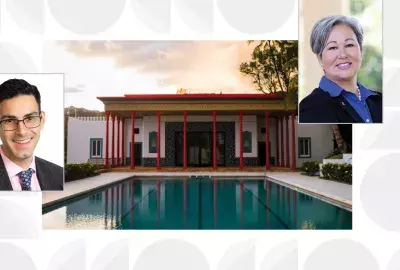Error message

By East-West Center
HONOLULU (March 27, 2020)—Population aging is affecting countries all across Asia. This ongoing demographic transition will leave many of the region’s economies increasingly dependent on an aging, and eventually a shrinking, workforce. Economists disagree, however, on whether population aging will necessarily lead to a slowdown in economic growth.
The Asian Development Bank recently launched its 2019/2020 Asian Economic Integration Report with a special focus on demographic change, productivity, and the role of technology. The Bank’s Chief Economist and Director General, Yasuyuki Sawada, introduced the report at a conference on population aging and sustainable growth hosted by the East-West Center. The report summarizes both positive and negative aspects of population aging and suggests policies that Asian governments can pursue to sustain economic growth in the context of an aging workforce.
On the positive side, healthier lifestyles, advanced healthcare and medical technologies, and improvements in educational attainment imply that tomorrow’s older workers will be healthier and better educated than today’s. With these improvements, most economies are expected to enjoy a continuous supply of high-quality workers even as their populations age. The average healthy life span in Asia and the Pacific increased by nearly seven years―from 57.2 to 63.8 years―between 1990 and 2017. The average years of education among 55–64-year-olds also increased―from 4.6 in 1990 to 7.8 in 2015.
The changing health and education profiles of Asia’s older workers offer the region’s economies an opportunity to maintain the high productivity they enjoyed when their working-age populations were expanding. For one thing, improved health and longevity encourage older workers (age 55‒64) to stay in or reenter the labor force. Countries reap productivity gains from these additional workers, and they have more time to make technology and policy adjustments before the overall share of the population in the workforce begins to decline.
The role of new technologies, new skills
Historically, an aging workforce was seen as an impediment to an economy’s innovative capacity, which is an important engine of economic growth. Technological progress, however, can help mitigate the downside economic impact of aging.
New technologies may raise the labor force participation rates of older workers—and improve the productivity of all workers—by complementing and augmenting physical labor. Productivity-enhancing technologies fall into five broad groups, those that: (1) substitute labor and skills (such as industrial and service robots); (2) complement labor and skills (such as remote-office and collaboration tools); (3) enhance education, skills development, and lifelong learning (such as online learning platforms); (4) better match workers with jobs and tasks (through job portals and cloud-sourcing platforms); and (5) extend healthy life and overall life expectancy (with digital therapeutics and bioinformatics).
Policy Recommendations
Given that Asian countries are at different stages of educational attainment and demographic transition, the policy priorities and strategies for technology adoption and skills development necessarily differ across the region. Countries that are aging quickly but have made large improvements in education need different technology and skills development from countries with a younger population and lower educational attainment. Nevertheless, a common need exists for policies that support technology adaptation and lifelong learning.
Policies that leverage technology to improve workforce efficiency and provide greater flexibility in labor market participation should be put in place across the region. Such policies fall into three areas. First are policies that provide subsidies and tax incentives to support the diffusion, adoption, and application of technological innovations. It is important to create mechanisms that make new technologies―such as the Internet and Global Positioning Systems―fully accessible to an aging workforce. By expanding public Wi-Fi coverage, for example, countries can enhance the use of multiple technologies that help the elderly and other population groups.
Second are labor laws that adapt to employees’ diverse working styles, such as those encouraging mid- and late-career employment, work sharing, and options for gradual retirement. Third are policies directed at reforming social security and tax systems so as not to penalize or disincentivize older workers from participating in the labor force. These policies range from raising the statutory retirement age to embracing the concept of “pensionable age,” one that allows a flexible and personalized approach to retirement. They also include laws and regulations to counter ageism in hiring, remuneration, retention, and dismissal procedures.
There is also an urgent need to rethink education and skills-training policies, with an emphasis on lifelong learning. Today, the unprecedented speed of technological progress is rapidly eroding the skills of many older workers. This calls for strategic reforms to improve learning and training opportunities and encourage older workers to invest in retaining, upgrading, and acquiring new skills.
To increase productivity in the face of population aging, Asian economies can benefit from regional cooperation frameworks that promote more efficient use of the diverse demographic profiles and resources available across the region. These frameworks should include support for foreign direct investment, labor migration, and technology transfers between countries.
Outward foreign direct investment can help companies tap the large supply of workers at different levels of education across the region. Appropriate policies can provide a favorable business environment by making it easy to register property and obtain credit, improving governance, creating economic zones, and ensuring protection for investors through mechanisms to settle disputes.
Labor migration can alleviate bottlenecks in the supply of primary-educated workers in some countries and the absence of post-secondary-educated workers in others. A regional framework that encourages cross-border labor mobility would include the international recognition of skills and qualifications and bring transparency to the process of hiring and employing overseas workers. In addition, social security agreements that provide for mutual recognition of pensions can reduce the barriers and costs of cross-border migration, especially among older workers.
Experience from economies in advanced stages of aging suggests that population aging can induce innovation and adoption of new technologies and so promote productivity and sustained growth. But there is no guarantee that all aging societies stand to benefit. Countries in Asia need to adopt technologies appropriate for their level of demographic transition, facilitate learning across all age and skill groups, and encourage regional cooperation for the most efficient use of their workforces and other resources.
###
This Asia-Pacific Wire is based on Asian Development Bank (2019), Asian economic integration report 2019/2020: Demographic change, productivity, and the role of technology, Manila: Asian Development Bank. The full report is available at https://www.adb.org/publications/asian-economic-integration-report-2019-2020.
Download a pdf version of this Wire article.
The East-West Wire is a news, commentary, and analysis service provided by the East-West Center in Honolulu. All or any part of the Wire content may be used by media with attribution to the East-West Center or the person quoted. To receive Wire articles via email, subscribe here. For links to all East-West Center media programs, fellowships and services, see EastWestCenter.org/Journalists.
The full list of East-West Wires produced by the Research Program is available on the East-West Center website at EastWestCenter.org/Research-Wire. For more on the East-West Center Research Program, see EastWestCenter.org/Research.
The East-West Center promotes better relations and understanding among the people and nations of the United States, Asia, and the Pacific through cooperative study, research, and dialogue.
Series editors:
Derek Ferrar
[email protected]
Sidney B. Westley
[email protected]
Photo: An older worker in the tool room of a shipbuilding factory in Hiroshima, Japan. Credit: Trevor Williams, Getty Images.
By East-West Center
HONOLULU (March 27, 2020)—Population aging is affecting countries all across Asia. This ongoing demographic transition will leave many of the region’s economies increasingly dependent on an aging, and eventually a shrinking, workforce. Economists disagree, however, on whether population aging will necessarily lead to a slowdown in economic growth.
The Asian Development Bank recently launched its 2019/2020 Asian Economic Integration Report with a special focus on demographic change, productivity, and the role of technology. The Bank’s Chief Economist and Director General, Yasuyuki Sawada, introduced the report at a conference on population aging and sustainable growth hosted by the East-West Center. The report summarizes both positive and negative aspects of population aging and suggests policies that Asian governments can pursue to sustain economic growth in the context of an aging workforce.
On the positive side, healthier lifestyles, advanced healthcare and medical technologies, and improvements in educational attainment imply that tomorrow’s older workers will be healthier and better educated than today’s. With these improvements, most economies are expected to enjoy a continuous supply of high-quality workers even as their populations age. The average healthy life span in Asia and the Pacific increased by nearly seven years―from 57.2 to 63.8 years―between 1990 and 2017. The average years of education among 55–64-year-olds also increased―from 4.6 in 1990 to 7.8 in 2015.
The changing health and education profiles of Asia’s older workers offer the region’s economies an opportunity to maintain the high productivity they enjoyed when their working-age populations were expanding. For one thing, improved health and longevity encourage older workers (age 55‒64) to stay in or reenter the labor force. Countries reap productivity gains from these additional workers, and they have more time to make technology and policy adjustments before the overall share of the population in the workforce begins to decline.
The role of new technologies, new skills
Historically, an aging workforce was seen as an impediment to an economy’s innovative capacity, which is an important engine of economic growth. Technological progress, however, can help mitigate the downside economic impact of aging.
New technologies may raise the labor force participation rates of older workers—and improve the productivity of all workers—by complementing and augmenting physical labor. Productivity-enhancing technologies fall into five broad groups, those that: (1) substitute labor and skills (such as industrial and service robots); (2) complement labor and skills (such as remote-office and collaboration tools); (3) enhance education, skills development, and lifelong learning (such as online learning platforms); (4) better match workers with jobs and tasks (through job portals and cloud-sourcing platforms); and (5) extend healthy life and overall life expectancy (with digital therapeutics and bioinformatics).
Policy Recommendations
Given that Asian countries are at different stages of educational attainment and demographic transition, the policy priorities and strategies for technology adoption and skills development necessarily differ across the region. Countries that are aging quickly but have made large improvements in education need different technology and skills development from countries with a younger population and lower educational attainment. Nevertheless, a common need exists for policies that support technology adaptation and lifelong learning.
Policies that leverage technology to improve workforce efficiency and provide greater flexibility in labor market participation should be put in place across the region. Such policies fall into three areas. First are policies that provide subsidies and tax incentives to support the diffusion, adoption, and application of technological innovations. It is important to create mechanisms that make new technologies―such as the Internet and Global Positioning Systems―fully accessible to an aging workforce. By expanding public Wi-Fi coverage, for example, countries can enhance the use of multiple technologies that help the elderly and other population groups.
Second are labor laws that adapt to employees’ diverse working styles, such as those encouraging mid- and late-career employment, work sharing, and options for gradual retirement. Third are policies directed at reforming social security and tax systems so as not to penalize or disincentivize older workers from participating in the labor force. These policies range from raising the statutory retirement age to embracing the concept of “pensionable age,” one that allows a flexible and personalized approach to retirement. They also include laws and regulations to counter ageism in hiring, remuneration, retention, and dismissal procedures.
There is also an urgent need to rethink education and skills-training policies, with an emphasis on lifelong learning. Today, the unprecedented speed of technological progress is rapidly eroding the skills of many older workers. This calls for strategic reforms to improve learning and training opportunities and encourage older workers to invest in retaining, upgrading, and acquiring new skills.
To increase productivity in the face of population aging, Asian economies can benefit from regional cooperation frameworks that promote more efficient use of the diverse demographic profiles and resources available across the region. These frameworks should include support for foreign direct investment, labor migration, and technology transfers between countries.
Outward foreign direct investment can help companies tap the large supply of workers at different levels of education across the region. Appropriate policies can provide a favorable business environment by making it easy to register property and obtain credit, improving governance, creating economic zones, and ensuring protection for investors through mechanisms to settle disputes.
Labor migration can alleviate bottlenecks in the supply of primary-educated workers in some countries and the absence of post-secondary-educated workers in others. A regional framework that encourages cross-border labor mobility would include the international recognition of skills and qualifications and bring transparency to the process of hiring and employing overseas workers. In addition, social security agreements that provide for mutual recognition of pensions can reduce the barriers and costs of cross-border migration, especially among older workers.
Experience from economies in advanced stages of aging suggests that population aging can induce innovation and adoption of new technologies and so promote productivity and sustained growth. But there is no guarantee that all aging societies stand to benefit. Countries in Asia need to adopt technologies appropriate for their level of demographic transition, facilitate learning across all age and skill groups, and encourage regional cooperation for the most efficient use of their workforces and other resources.
###
This Asia-Pacific Wire is based on Asian Development Bank (2019), Asian economic integration report 2019/2020: Demographic change, productivity, and the role of technology, Manila: Asian Development Bank. The full report is available at https://www.adb.org/publications/asian-economic-integration-report-2019-2020.
Download a pdf version of this Wire article.
The East-West Wire is a news, commentary, and analysis service provided by the East-West Center in Honolulu. All or any part of the Wire content may be used by media with attribution to the East-West Center or the person quoted. To receive Wire articles via email, subscribe here. For links to all East-West Center media programs, fellowships and services, see EastWestCenter.org/Journalists.
The full list of East-West Wires produced by the Research Program is available on the East-West Center website at EastWestCenter.org/Research-Wire. For more on the East-West Center Research Program, see EastWestCenter.org/Research.
The East-West Center promotes better relations and understanding among the people and nations of the United States, Asia, and the Pacific through cooperative study, research, and dialogue.
Series editors:
Derek Ferrar
[email protected]
Sidney B. Westley
[email protected]
Photo: An older worker in the tool room of a shipbuilding factory in Hiroshima, Japan. Credit: Trevor Williams, Getty Images.
East-West Wire
News, Commentary, and Analysis
The East-West Wire is a news, commentary, and analysis service provided by the East-West Center in Honolulu. Any part or all of the Wire content may be used by media with attribution to the East-West Center or the person quoted. To receive East-West Center Wire media releases via email, subscribe here.
For links to all East-West Center media programs, fellowships and services, see www.eastwestcenter.org/journalists.







